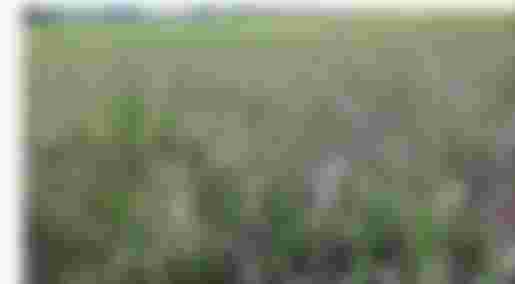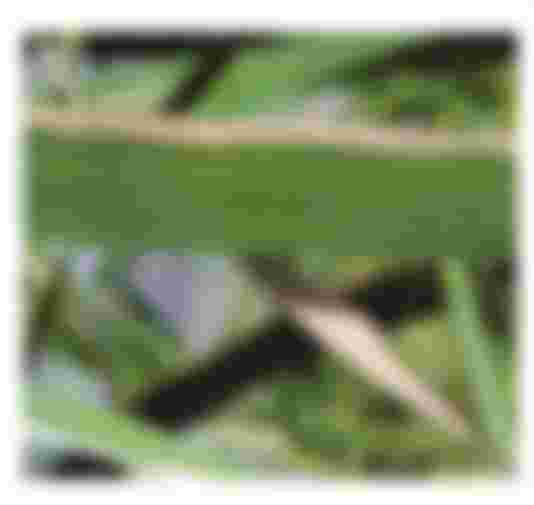Farmer's dream is to celebrate the green across the vast field. The green paddy leaves sway like small waves in the sea. Farmers' empty fields will be filled with golden paddy, this is what the farmers had hoped for in the current boro season.
In the middle of the boro season, after the infestation of rats in the field, the boro farmers of Gournadi upazila of Barisal district are in trouble due to the burning of leaves or BLB disease in the paddy field with only a few days left to ripen.
Infected paddy fields are not getting rid of the disease even after applying pesticides. As a result, the farmers are getting lost as the paddy of the land has become sticky.

Shahin Sharif, a farmer in the Harisena block of the municipal area, said that after a few days of heavy rains, at first two or three paddy leaves were burnt. Later, the paddy leaves of the whole land were burnt and quickly spread to the surrounding lands. Even after spraying the medicine, it is not possible to control the leaf burning disease of Boro paddy.
He added that half of his paddy land has already been destroyed due to leaf blight.
Farmer Ripon Pada said he has cultivated boro paddy before. However, this is the first time that leaf blight has appeared in his land. He took advice from the local deputy assistant agricultural officer but did not get any remedy.
He added that he has cultivated boro on 120 acres of land by borrowing money. In the meantime, 10 to 12 thousand rupees has been spent every 30 centuries by applying irrigation, fertilizers and pesticides. The yield has been quite good in the beginning. With only a few days left to ripen, many of them have lost their way due to leaf blight.
Farmer Helal Bepari said they expected bumper yields as it rained at the right time after the boro planting this season. But in the middle of paddy planting, rat infestation occurs in the field. At that time they killed rats with drugs of different companies.
Now, just before the ripening of the paddy, the leaves have been burnt in the land, which has caused a kind of death to them. He is also fearing a labor crisis to pick ripe paddy from the land as knee-deep water has accumulated in the Boro fields due to heavy rains for several days.

Leaf burn disease has been observed in different borough blocks of Gournadi in acre after acre of semi-ripe paddy fields. In the paddy fields, half-ripe paddy leaves are burnt and the stalks are dried and the stalks are getting stuck inside.
Regarding leaf blight, Gournadi Upazila Agriculture Officer Mamunur Rahman said boro has been cultivated in 6,300 hectares of land in seven UPs and one municipal area of Gournadi Upazila during the current boro season. In the middle of paddy cultivation, the farmers were very disappointed as the rats cut down the paddy trees. After receiving the news, he went to the field with the Deputy Assistant Agricultural Officers and succeeded in killing rats through various innovations.
He added that although there are a few days left to harvest paddy, it is suddenly hot during the day and cold at night. In addition, in the last few days, heavy rains have caused leaf blight in several blocks of land. He advised the farmers to remedy the disease by inspecting the affected blocks as soon as leaf blight or BLB disease appeared in the Boro field.
Name of the disease:
Bacterial Leaf Blight (BLB) (Xanthomonas campestris pv. Oryzae) is a bacterial disease.
Symptoms:
The disease causes two types of symptoms in plants and older trees.
In seedling stage it is called decay or seedling rot (Crisc) and in old age it is called leaf blight disease. The outer leaves of the seedlings turn yellow and gradually dry and turn into straw color, so that the new leaves dry out in the same way and the seedlings fall off. When pressed by hand at the base of the seedling, a foul-smelling substance like pus comes out.
Older trees first have small watermark spots on the edges and ends of the leaves. These spots gradually enlarge and move downwards or inwards through the two ends of the leaf, the affected part fades and turns a grayish brown color which appears to be scorched or burnt.
Integrated Suppression Management:
No wounds during transplanting.
Do not cultivate attack prone varieties.
Do not use excess urea fertilizer as required.
All urea should be applied in 2/3 installments without giving seedlings or Kushi condition.
In case of disease, the water of the land dries up and gives water again after 8-10 days.

If the disease occurs in the seedling stage, the amount of damage will be less if the infected seedlings are removed and Kushi is brought from the surrounding trees.
After harvesting the paddy, plow the land and burn the stubble.
In the affected land 50-100 g of potash fertilizer is mixed with 10 liters of water and sprayed on 5% of the land in the afternoon.
Apply 5/6 kg of potash fertilizer per bigha.
Do not use urea fertilizer immediately after the storm.
Kupravit 4 gm champion mixed with 2 gm per liter of water and sprayed. If necessary 1% bordomicure can be used.


